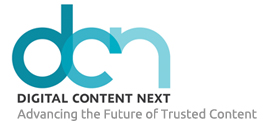Social media platforms offer journalists a path to audiences and sources. They also give them a way to build their personal brands. However, social media also includes risks such as “dark participation.” We’ve all witnessed forms of dark participation, from hateful comments, manipulation of forums, and copious misinformation.
Journalists are often the target of online harassment. In many cases, these attacks specifically target African American, Latino, LGBTQ, Arab-American, Muslim, and Jewish reporters. As journalists face more online harassment, newsrooms are setting social policies to support and protect journalists from increasingly intense online abuse. But many journalists report concerns about social media’s policy development process in the newsroom.
Kaitlyn Miller and Jacob Nelson’s research, ”Dark Participation” Without Representation: A Structural Approach to Journalism’s Social Media Crisis, looks at how newsrooms can adjust their values and practices regarding social media. The authors focused on women and journalists of color because these two cohorts experience the most hostility online.
And, while both groups face the highest risks, they have little control in setting social policies. Newsroom managers developing social media policies tend to be predominantly older, white men who are less active on social platforms.
Methodology and findings
Miller and Nelson interviewed 37 U.S. journalists. The interviews included 22 women and 18 journalists of color. By exploring the relationship between newsroom management and the journalists’ own experiences on social media, three key themes emerged:
- Problems with newsroom social media policies.
- Adjust policies through better representation within newsroom leadership.
- Positive impact with better representation.
Newsroom demographics
Journalism lags behind the national averages regarding the representation of diverse employees. A 2018 Pew Research Center noted that 77% of newsroom employees and reporters (editors, photographers, and videographers, in broadcasting and internet publishing industries) are non-Hispanic whites, compared with 65% of the U.S. Population. Further, among newsroom employees 30 and older, two-thirds are male, compared to slightly more than half of all U.S. workers.
Disconnect
Given the demographic composition of the newsroom, there is a disconnect between journalists who are active on social media and those setting social policy. Many social media policies often limit journalists’ comments because of concerns of bias.
Interviewees explain that anti-bias social media policies set by management often have a narrower lens and view social practices of demographically diverse journalists as biased. For example, some newsroom managers view the statement “black lives matter” as political and biased. Among younger and more diverse journalists, this statement mostly asserts equality.
Interviewees report feeling isolated when targeted with hateful comments because of their racial background. While some claim management is sympathetic, they report that those in leadership roles have limited empathy to understand the situation. Social media policies are also criticized because the policies for lacking depth in terms of protecting both the organization and the individual journalists.
Recommendation and positive change
Most interviewees suggest that younger and more demographically diverse journalists, especially those active on social media, should be included in developing newsroom social media policies. This starts with hiring more demographically diverse journalists in roles across the newsroom, especially in leadership positions.
Journalists with different roles and backgrounds working together allow for new conversations and offer more applicable social media policies, including to:
- protect both organizations and journalists,
- identify how to respond to social media harassment against their journalists; and
- offer a more equitable response plan to accusations of bias against journalists on social media.
Miller and Nelsen conclude that “better representation in newsroom leadership hinges on a larger structural shift in newsroom culture that values representation, equity, and inclusion not just as a journalistic value, but as an organizational value.”
Increasing the diversity of newsroom journalists can reshape newsroom culture and allow organizations to better address mistreatment on social media. It also offers a stronger and more empathetic support system. it sends a message to journalists that they are not only important enough to be included in the decision-making, but a priority and asset worth protecting.




























